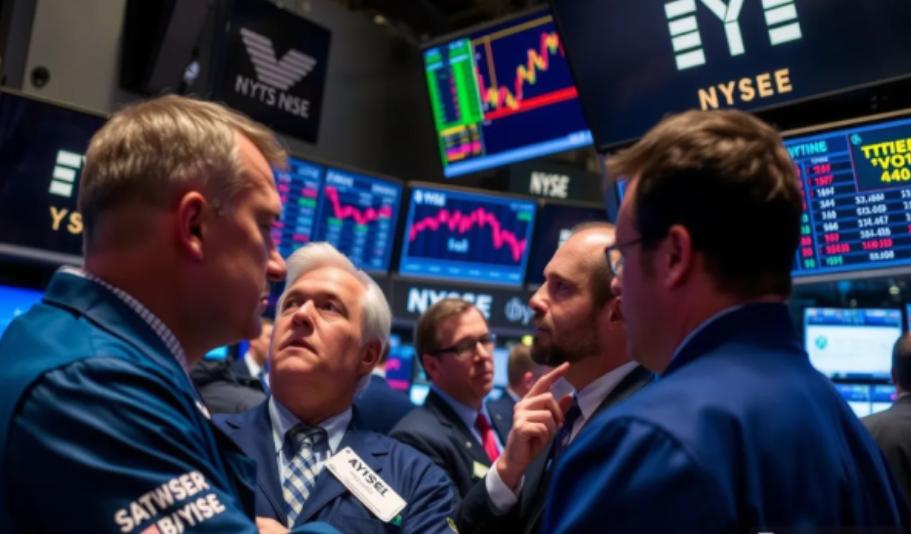
Recently, the US stock market has once again become the focus of global investors' attention, with significantly increased volatility, triggering extensive discussions and in-depth analysis in the market. From macroeconomic data, policy changes, market sentiment to specific industry performance, multiple factors are intertwined to jointly shape the complex pattern of the US stock market.
Since entering the new quarter, the US stock market has not continued its previous strong trend, but has shown significant volatility. Especially in early September 2024, the three major US stock indices - the Dow Jones Industrial Average, the Nasdaq, and the S&P 500- all experienced varying degrees of decline. This volatility is not only reflected at the index level, but also delves deeper into various industries and individual stocks, making investors feel unprecedented pressure and challenges.
Concerns about economic recession have intensified. Recently, the weak performance of US economic data, especially in the manufacturing sector where indicators continue to be below the boom bust line, has intensified market concerns about economic recession. The manufacturing PMI data released by the Institute for Supply Management (ISM) in the United States shows that manufacturing activity has contracted for several consecutive months, which directly affects investors' confidence in future economic growth. In addition, the decline in the international crude oil market also reflects expectations of a global economic slowdown and reduced oil demand, further exacerbating market pessimism.
Uncertainty in Federal Reserve policy expectations. The monetary policy of the Federal Reserve has always been one of the important factors affecting the US stock market. Recently, the market's expectation for the Federal Reserve to cut interest rates has become increasingly strong, but there is still uncertainty about the specific magnitude and timing of the rate cuts. This uncertainty makes investors more cautious when making decisions, fearing that interest rate cuts may not effectively prevent economic slowdown or bring other negative impacts. At the same time, the performance of the Federal Reserve in the early policy adjustments has also raised questions and concerns in the market.
Technology stocks led the decline and market sentiment fluctuated. In the decline of the US stock market, the technology sector undoubtedly played an important role. Especially the sharp decline in stock prices of leading chip companies such as Nvidia not only dealt a heavy blow to the technology sector itself, but also triggered market panic. As one of the leaders in the US stock market, the performance of technology stocks directly affects the overall market trend. In addition, changes in market sentiment have also intensified market volatility. Investors often choose safe haven operations when faced with uncertainty, leading to short-term volatility in the market.
Seasonal factors and international political and economic events. In addition to the aforementioned factors, seasonal factors and international political and economic events have also had an impact on the US stock market. In history, September is often seen as the "curse month" for the US stock market, with increased market volatility. Meanwhile, international political and economic events such as trade wars and geopolitical tensions may trigger market uncertainty, leading to stock market volatility.
As the Federal Reserve policy meeting approaches, market expectations for monetary policies such as interest rate cuts will gradually become clearer. This will help stabilize market sentiment and reduce uncertainty. If the Federal Reserve can take appropriate policy measures to support economic growth and financial market stability, the US stock market is expected to receive some liquidity support and restore upward momentum. Of course, in the face of market volatility and uncertainty, investors should maintain a cautious attitude and pay attention to market dynamics. On the one hand, we need to closely monitor changes in fundamental factors such as policy adjustments and economic data; On the other hand, we need to pay attention to changes in market indicators such as market sentiment and capital flow. By adjusting investment strategies and risk control measures in a timely manner to respond to market changes and achieve long-term returns.
In short, the recent volatility in the US stock market is the result of multiple factors working together. Although the market is facing some challenges and uncertainties in the short term, we should still maintain a cautious and optimistic attitude in the medium to long term. By paying attention to changes in policy adjustments, fundamental factors, the potential of technology stocks, and market dynamics, we can better grasp market opportunities and respond to potential risks. At the same time, investors should maintain a rational investment attitude and avoid blindly following trends and speculative behavior to ensure their own investment safety and stable returns.

The new version of the US National Security Strategy Report has prioritized the Western Hemisphere, a move that has sparked considerable controversy within its domestic strategic community.
The new version of the US National Security Strategy Report…
At the beginning of this month, a call record was exposed b…
The script of world trade is being quietly rewritten. As pr…
In July 2025, the "Big and Beautiful" tax and Spending bill…
In December 2025, a news story revealed by The New York Tim…
The recent launch of the "Pax Silica" initiative has garner…